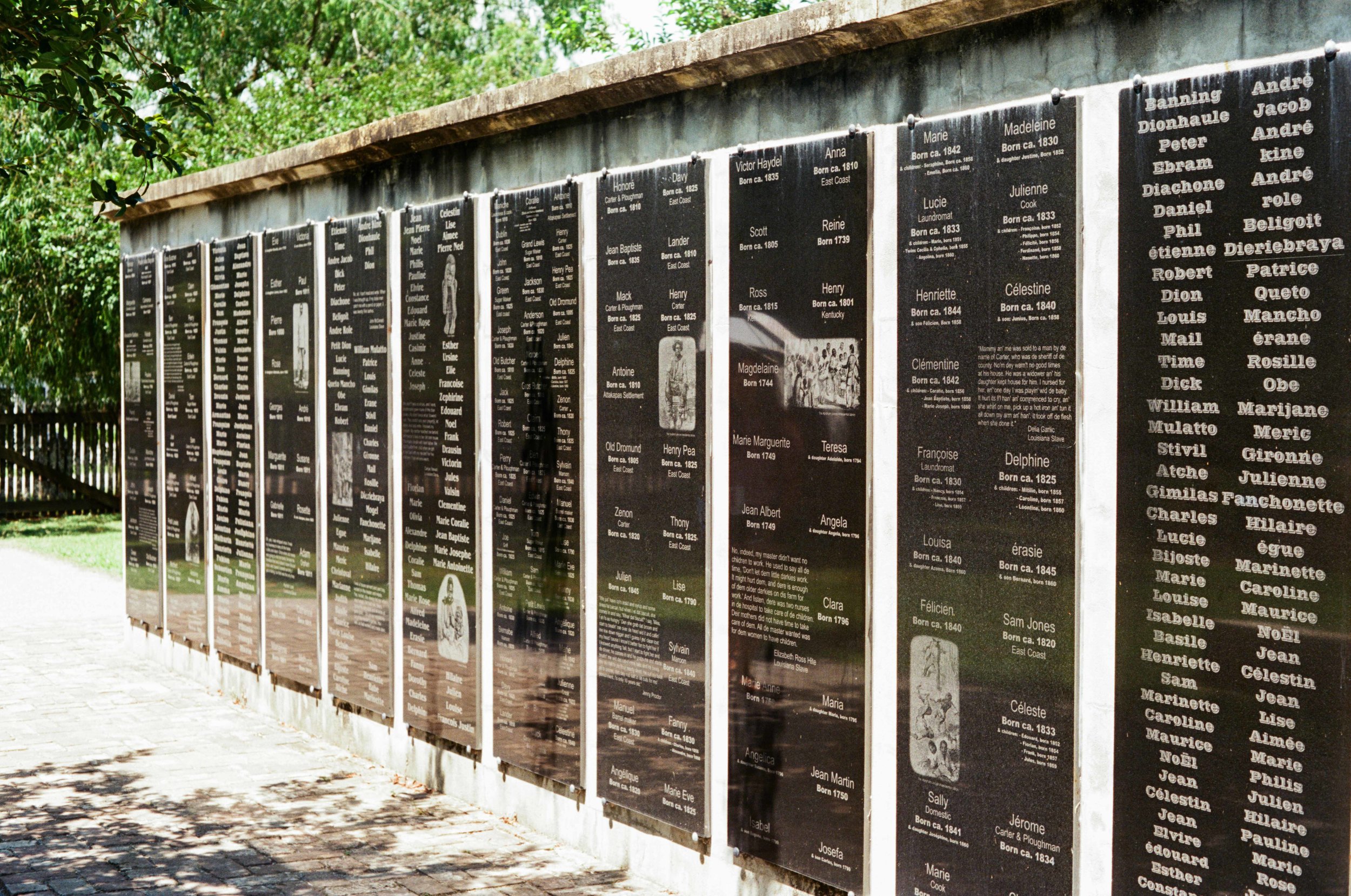Visiting the Whitney Plantation was enlightening and overwhelming. Never before had I learned about the brilliance of enslaved peoples but our tour guide at the Whitney pointed out how enslaved peoples were cherry-picked from Africa for their knowledge about specific trades and cultivating certain crops. The Whitney Plantation Museum works tirelessly and intentionally to tell the truth of the brutuality of slavery and what went on at this plantation. Below, through photographs I took, I want to highlight aspects of the tour that stuck out the most to me.
A condensed history of slavery relating to the Whitney Plantation
The names of children born on the plantation into slavery
The “Jamaica Train”, a series of open kettles in which sugar cane juice was heated
Slave cabins
Inside the quarters of enslaved peoples
The bars of a cage that enslaved peoples were held in during the auction process
Bricks on the floor of the Haydel home laid by slaves
Memorials of enslaved peoples—the only thing that is memorializing their deaths
The Field of Angels—a memorial for the enslaved children in Louisiana who died before their 3rd birthday—with our tour guide in the background









